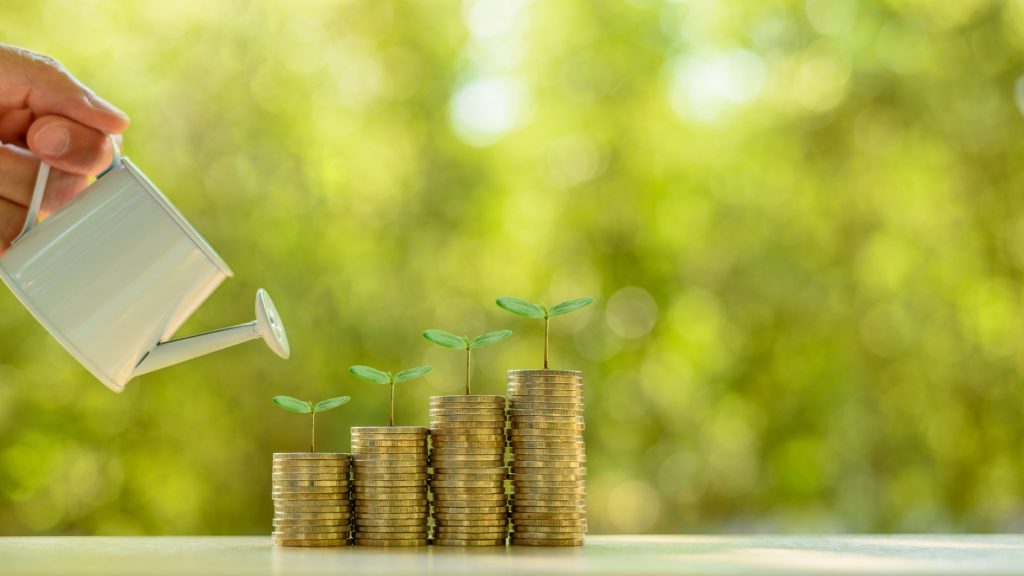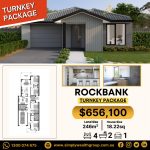Best Green Property Developments for Investors
Green property developments are gaining traction. They represent a new wave in Australian real estate, combining investment potential with environmental responsibility.
Sustainable housing and environmentally friendly homes are at the heart of this trend. They offer a unique blend of financial returns and ecological benefits.
This guide will delve into the world of green property developments. It aims to provide investors with valuable insights into this burgeoning sector.
We’ll explore what sets these developments apart. We’ll also look at why they’re a smart choice for those seeking to invest in the future of real estate.
From the environmental benefits to the financial incentives, there’s much to discover.
So, whether you’re a seasoned investor or just starting out, join us as we uncover the best green property developments available today.
Understanding Green Property Developments
Green property developments prioritize sustainability and reduce environmental impact. They incorporate eco-friendly design, construction methods, and materials. This approach ensures efficient resource use.
Their importance is growing in today’s market. As awareness of climate change increases, so does demand for sustainable solutions. Green developments meet this need by offering homes that minimize carbon footprints.
Green properties feature a range of sustainable technologies. They often include energy-efficient appliances, renewable energy systems, and sustainable landscaping. These features play a key role in reducing environmental damage.
Key Characteristics of Green Developments:
- Use of renewable energy sources like solar panels.
- Incorporation of energy-efficient windows and insulation.
- Implementation of water conservation systems.
Such developments promise not just reduced energy bills, but also contribute to healthier living environments. They are designed to maximize natural light and ventilation. This approach improves the indoor air quality, benefitting inhabitants’ well-being.
In conclusion, green property developments are a thoughtful response to the urgent call for sustainability in real estate. By integrating modern technologies and sustainable practices, they set new standards for the future of living spaces.
Why Invest in Sustainable Housing?
Sustainable housing is more than a trend; it’s a smart investment choice. Environmental awareness shapes consumer demands, increasing the value of green properties. Investors are noticing this shift.
Demand for eco-friendly homes is rising as buyers seek sustainable lifestyles. These homes appeal to environmentally conscious individuals and families. The desire for healthier living environments is a strong motivator.
Investing in sustainable housing supports a sustainable future. By choosing green developments, investors contribute to reducing environmental impact. This is a crucial step in combating climate change.
Green developments frequently offer long-term savings. Energy-efficient systems reduce utility bills, offering value beyond the initial purchase. These savings can be a significant draw for buyers.
Moreover, sustainable housing aligns with many global sustainability goals. Investing in these properties supports responsible construction practices. This makes them a compelling option for forward-thinking investors.
Environmental Benefits
Green property developments lead to significant environmental benefits. They reduce carbon emissions by using energy more efficiently. These measures contribute to lowering the overall carbon footprint.
Many sustainable homes incorporate renewable energy technologies. Solar panels and wind turbines provide clean, renewable power. This reduces reliance on fossil fuels, decreasing pollution.
Further, sustainable housing often includes eco-friendly landscaping. Native plants and green spaces promote biodiversity. They create habitats for local wildlife, enhancing urban ecosystems.
Financial Incentives and Resale Value
Investing in sustainable homes can offer numerous financial incentives. Tax incentives and rebates are often available. These can significantly reduce the upfront costs of green technologies.
Moreover, sustainable properties tend to have a higher resale value. Buyers are willing to pay more for eco-friendly features. This makes green homes attractive investments in competitive markets.
Energy efficiency also leads to decreased utility expenses. Lower costs make properties more appealing to potential buyers. As a result, sustainable housing provides both immediate and long-term financial benefits for investors.
Spotlight on Leading Green Property Developments
Across the globe, several green property developments are setting benchmarks in sustainability. These projects not only meet but exceed environmental standards. They embody the future of real estate.
Located in Singapore, the Punggol Eco-town is a prime example. This development integrates green technology and community spaces. It showcases efficient energy use and sustainable design.
In Europe, the Vauban district in Freiburg, Germany is noteworthy. It serves as a model for eco-friendly urban planning. Its emphasis on solar energy and car-free living is exemplary.
Masdar City in Abu Dhabi represents a vision for sustainable urban living. Built to rely entirely on renewable energy, it’s a zero-carbon city. Masdar City highlights innovation in green development.
North America also features pioneering developments. The Dockside Green community in Canada is carbon-neutral. It uses biomass energy and treats its own wastewater, setting high environmental standards.
Here are key features these developments share:
- Integration of renewable energy sources.
- Use of sustainable materials in construction.
- Emphasis on community green spaces.
- Application of smart technology to enhance efficiency.
- Focus on water conservation and recycling.
Such international projects demonstrate the versatility of green building. Their strategies inspire further innovation in sustainable urban development. Each project exemplifies unique methodologies for environmental stewardship.
These developments extend benefits beyond architecture. They enhance residents’ quality of life. Features like improved indoor air quality and natural light contribute to better well-being.
Communities in these developments often engage in sustainability education. This strengthens awareness and promotes eco-friendly practices. Social responsibility is as vital as ecological impact.
Green property developments are influencing local economies positively. They often serve as tourist attractions, driving economic growth. Moreover, they create employment in innovative construction and green technology sectors.
Case Studies of Success
Punggol Eco-town in Singapore stands out with its integration of nature and living. The development incorporates greenery throughout, enhancing residents’ connection to nature. Public spaces within the eco-town are designed to foster community involvement.
Vauban in Germany offers another compelling case. This district prioritizes pedestrian pathways, promoting a car-free environment. Its urban design encourages sustainable lifestyles through easy access to amenities.
Masdar City in Abu Dhabi showcases advanced renewable energy systems. Despite its challenging desert location, the city achieves net-zero carbon emissions. Innovative techniques like passive cooling illustrate how design adapts to climate demands.
Dockside Green in Canada leads in community-based environmental strategies. The project invests in local partnerships to enhance its sustainability efforts. Its successful rainwater management system serves as a model for others.
Moreover, these developments often participate in international green building assessments. Their high rankings in these evaluations underscore their effectiveness. As successful case studies, they inspire green efforts worldwide.
The Role of Certifications in Green Developments
Certifications play a pivotal role in green property developments. They provide a framework for sustainable practices, ensuring consistency and quality. Green certifications elevate the credibility of eco-friendly projects.
Investors consider these certifications as indicators of reliability. They assure that properties meet stringent environmental standards. This assurance can be a decisive factor for real estate buyers.
Certifications also drive innovation in construction. They push developers to adopt cutting-edge technologies. By doing so, certifications contribute to a broader sustainability movement.
Understanding LEED and Other Green Certifications
LEED, or Leadership in Energy and Environmental Design, is a prominent certification. It evaluates buildings based on energy efficiency, water usage, and material selection. LEED-certified projects are recognized globally for their sustainability.
Other certifications, like BREEAM and Green Star, also guide sustainable building. Each certification has unique criteria tailored to regional needs. They support a wide array of sustainable development goals.
Choosing the right certification can greatly impact a development’s success. It aligns the project with best practices in sustainability. This alignment attracts informed investors interested in green building standards.
Key Features of Environmentally Friendly Homes
Environmentally friendly homes are becoming increasingly appealing. They offer benefits that go beyond aesthetics and location. Understanding their key features can aid investors in making informed decisions.
Such homes often incorporate several sustainable features. These elements are designed to reduce environmental impact and enhance living conditions. Below are some of the most notable features:
- Energy efficiency and use of renewable energy sources.
- Water conservation techniques like rainwater harvesting.
- Integration of smart technology for optimal resource management.
- Sustainable materials and low-impact construction practices.
- Indoor environmental quality to boost occupant health.
Incorporating these features often results in lower utility costs. They enhance comfort and longevity, making green homes a wise investment choice. The use of eco-friendly materials and smart technology also increases overall property value.
Energy Efficiency and Renewable Energy
Energy efficiency is central to eco-friendly homes. These buildings optimize energy use, drastically reducing consumption. This results in significant cost savings over time.
Renewable energy solutions further augment these homes. Many utilize solar panels or wind turbines. These renewable sources provide clean energy, lessening dependence on non-renewable resources.
Investors find this appealing because of potential tax incentives. Energy-efficient homes often qualify for rebates. These investment property financing benefits enhance the attractiveness of green properties.
Water Conservation Techniques
Water conservation is another hallmark of green homes. Innovative systems are employed to minimize water waste. These include advanced plumbing systems and water-efficient fixtures.
Rainwater harvesting is one prevalent technique. It captures and stores rainwater for various uses. This conserves potable water and reduces utility expenses.
Greywater recycling is also becoming common. It repurposes water from baths and sinks for non-potable uses. This recycling helps maintain water balance and supports sustainable living.
Smart Technology Integration
Smart technology is revolutionizing environmentally friendly homes. It allows precise control over energy and water usage. This integration improves efficiency and reduces waste.
Smart home devices can monitor and adjust heating and lighting. They automate these processes, ensuring optimal use of resources. This automation aligns perfectly with sustainable living goals.
Additionally, these technologies offer real-time data. Homeowners can track resource consumption patterns. Access to this information enables informed decisions to further conserve resources.
The Future of Green Property Developments
The future of green property developments is promising. Increased awareness and demand for sustainability are driving the market forward. Developers are adapting to these changes, crafting eco-friendly structures.
Advancements in technology are a critical component. They enable the creation of more efficient and sustainable properties. These innovations will continue to shape the real estate market. Visit Simply Invest Group for more updates!
Additionally, policy and regulatory shifts are expected. Governments are likely to introduce incentives to encourage sustainable developments. Such support will further promote eco-conscious construction practices.
Trends and Innovations
Current trends in green property developments focus on holistic sustainability. Integration of urban agriculture is gaining popularity. This trend addresses food security while promoting green spaces.
Innovation in building materials is another area of growth. Bio-based and recycled materials are replacing traditional options. These materials reduce carbon footprint significantly while enhancing durability.
Furthermore, net-zero carbon emissions are becoming a realistic goal. Developments aiming for net-zero status are implementing comprehensive strategies. These strategies encompass energy production, resource conservation, and waste reduction.
Investing in Green Property: Tips and Considerations
Investing in green property offers numerous benefits, yet requires careful consideration. An informed approach ensures maximum returns and minimal risks. Here are some tips to guide your property investment strategy.
First home buyers, needs to understand the market dynamics. Analyze trends in sustainable housing and eco-friendly homes. This knowledge helps identify opportunities aligned with future demands.
Next, evaluate properties using key sustainability criteria. Consider energy efficiency, water conservation, and certification standards. These factors contribute to the property’s long-term value.
- Research local policies supporting green developments
- Evaluate community and tenant demand for sustainable living
- Assess the developer’s reputation and past green projects
Additionally, financial considerations should not be overlooked. Consider potential tax benefits associated with green properties. Look for incentives and rebates specific to your region.
Finally, collaborate with experts familiar with green real estate. Their insights can enhance your investment decisions. Professionals can provide valuable guidance on navigating this niche market.
Evaluating Potential Investments
Evaluating potential green property investments requires a strategic approach. Consider the property’s location, as proximity to amenities enhances value. Assess transportation access, especially for environmentally conscious tenants.
Examine the property’s environmental certifications, such as LEED or similar standards. Certified developments often have higher resale values and lower operational costs. They also stand out in competitive markets.
Consider the sustainability features integrated into the design. Energy-efficient systems and smart technology add considerable value. Evaluate how these features align with current and future green trends.
Overcoming Challenges and Barriers
Investing in green properties presents unique challenges. A primary barrier is the higher initial cost of sustainable construction. However, long-term savings in energy and maintenance often offset this.
Finding reliable and experienced developers can be another challenge. Ensure the developer has a proven track record in green developments. This reduces risks associated with poor construction practices.
Regulatory and policy changes can affect green investments. Stay informed about local and national policy shifts. This knowledge helps mitigate risks and leverage opportunities that arise from legislative support.
Conclusion: The Impact of Green Developments on Real Estate
Green property developments are reshaping the real estate landscape. Their influence is not limited to environmental benefits. They also enhance financial attractiveness, drawing a new wave of investors focused on sustainability.
These developments are leading a shift toward healthier, more efficient living spaces. They set new standards for energy use and building practices. This progress encourages a broader adoption of eco-friendly homes.
Finally, the rise of sustainable property investing signifies a move toward a more responsible market. It aligns with global sustainability goals, promising economic, environmental, and social benefits. Investors keen on future-proofing portfolios should consider these green opportunities.








